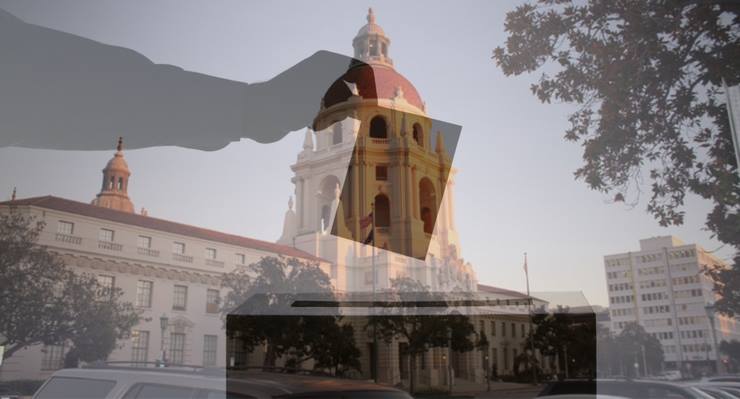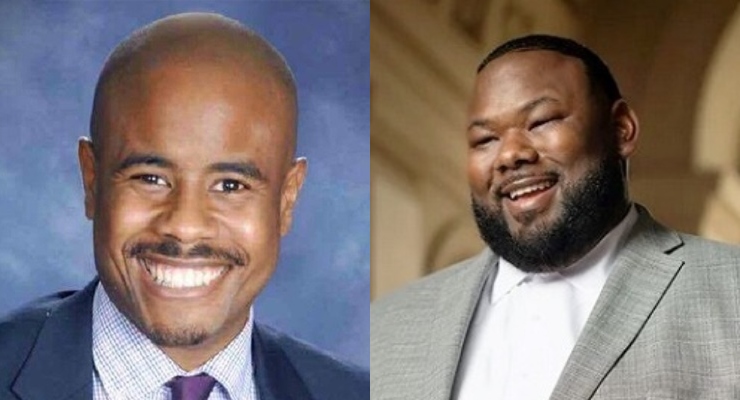
The Huntington Library, Art Museum, and Botanical Gardens announced Thursday that the extensive 18-month initiative to analyze, conserve, and restore The Blue Boy (ca. 1770) by Thomas Gainsborough (1727–1788) is complete, and the iconic painting will go back on view Thursday, March 26, in the Thornton Portrait Gallery.
With much of the process carried out in public view during the “Project Blue Boy” exhibition (Sept. 22, 2018–Sept. 30, 2019), the major undertaking involved high-tech data gathering and analysis as well as more than 500 hours of expert conservation work to remove old overpaint and varnish, repair and reattach the lining and other structural materials, and inpaint areas of loss as a result of flaking and abrasion. Now, minute shades of color, fine brushstroke textures, and nuanced details of the famous figure of a young man in a blue satin costume, as well as the landscape in which he stands, are once again legible and closer to what Gainsborough intended.
“The Blue Boy has been a star of The Huntington’s collections since we opened as the first old masters museum in Los Angeles in 1928, when visitors flocked to see this magnificent work of 18th-century British portraiture,” said Huntington President Karen R. Lawrence. “Now the painting is again the center of a joyous occasion, as we celebrate the completion of a robust and thoughtful conservation project. A well-attended exhibition showcasing the conservator at work, more than 100 public talks, and the convening of experts in the field all helped to define ‘Project Blue Boy’ as an ambitious and successful project with an educational focus.”
More than 217,000 people visited the “Project Blue Boy” exhibition. Christina O’Connell, The Huntington’s Mary Ann and John Sturgeon Senior Paintings Conservator and leader of the project, gave about 170 gallery talks, emphasizing the guidelines and code of ethics in the field of conservation as she responded to visitor questions on topics ranging from the history of the painting, to details of the technical study, to the structural elements of the work.
The conservation project involved slowly removing several uneven layers of dirt and discolored varnish with small cotton swabs to reveal Gainsborough’s original brilliant blues and other pigments. Then, with tiny brushes, the artist’s brushstrokes were reconnected across the voids of past damage as part of the inpainting process.
As O’Connell worked on the painting, she became intimately aware of Gainsborough’s every brushstroke. “It’s been an incredibly deep professional experience,” she said. “Conservation work is very much a process of discovery. I’ve not only had a view of the painting at the microscopic level, but I was also able to observe each stroke as the true colors of Gainsborough’s palette were revealed from underneath many layers of dirt and discolored varnish.” During the process, O’Connell discovered that although Gainsborough painted The Blue Boy on a recycled canvas (as revealed in earlier X-rays), he made considerable use of a complex network of paint layers and pigments to create a painting that truly showed off his skills.
“We have to remember that this painting wasn’t commissioned, but rather was produced by Gainsborough for the express purpose of showing off his prowess at the Royal Academy exhibition of 1770—where it would be seen next to the work of his rivals,” said Melinda McCurdy, The Huntington’s associate curator for British art and co-curator of “Project Blue Boy.” “Gainsborough intended it to grab attention, and conservation work has revealed the incredible technical skill he brought to this showpiece.”
Other discoveries made over the course of the project, which was supported by a grant from Bank of America, include one relating to the painting’s lining. After observation and analysis, conservators determined that the lining adhesive for The Blue Boy correlated to a historic recipe for a paste made of rye flour and ale. O’Connell enlisted the help of a food historian to recreate the paste with modern ingredients to construct a mock-up in order to observe how the materials for the lining behaved. More discoveries should be forthcoming once the copious data that was collected during the project is analyzed. Information was gathered via X-radiography, infrared reflectography, cross-section microscopy, and macro X-ray fluorescence scanning. The results of the analysis will take several more months.
Credit
Conservation was funded by a grant from the Bank of America Art Conservation Project. Additional generous support for this project was provided by the Getty Foundation, Friends of Heritage Preservation, and Haag-Streit USA.
About The Huntington
The Huntington Library, Art Museum, and Botanical Gardens is a collections-based research and educational institution serving scholars and the general public. More information about The Huntington can be found online at huntington.org.
Visitor Information
The Huntington is located at 1151 Oxford Road, San Marino, 12 miles from downtown Los Angeles. It is open to the public Wednesday through Monday from 10 a.m. to 5 p.m. Closed Tuesdays. Information: (626) 405-2100 or huntington.org.

















